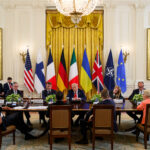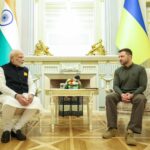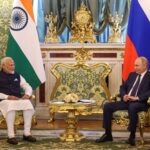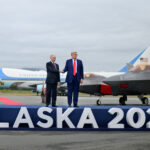For a person who put in long hours working on the ceasefire and peace plan for Gaza, President Donald Trump will certainly be under no illusions about bringing a quick end to the Russia-Ukraine conflict, which is slowly creeping into its fourth year. If there was considerable hope prior to the first summit of 2025 in Alaska between Presidents Trump and Vladimir Putin this August, similar optimism is now being raised ahead of a proposed second meeting in Budapest, Hungary, with the firm date yet to be fixed.
Without a doubt, Gaza was gut-wrenching, dealing with the fate of Israeli hostages in the hands of Hamas while facing a resolute Israeli Prime Minister Benjamin Netanyahu, determined to “finish off” the terrorist group that started the mayhem in October 2023.
In the case of Gaza, the Trump administration had no choice but to deal with a non-state terrorist organization, even if it may have been well supported over the years by legitimate state actors. However outrageous it may have been for President Putin to launch his so-called limited “Special Military Operation” to confront “thugs and Nazis,” the fact remains that Washington now has to engage with two formal players in the international system – each with a competing set of interests and objectives, and both approaching the negotiating table with preconditions.
There are many stumbling blocks on the road to peace – even before Presidents Putin and Volodymyr Zelensky meet, with or without President Trump. But at least one appears to be out of the way: the issue of American supply of Tomahawk missiles to Ukraine. Prior to President Zelensky’s latest visit to the White House, Tomahawks seemed to be at the top of the agenda; but by the time the delegations met, the issue had been effectively pushed to the backburner.
Aside from shortages of the missiles, President Trump appeared to acknowledge that their delivery was not a good idea. Speculation suggests that an intervening telephone call a few days earlier between Presidents Putin and Trump may have influenced this change of mind – perhaps with the Kremlin leader outlining the military implications of shifting dynamics.
The Tomahawks would have undoubtedly altered the complexion of the conflict, but military strategists were already emphasizing the vast difference between providing the missiles and being operationally ready to use them. As Tomahawks are typically launched from ships and submarines, it was felt that Ukraine was still far from having such platforms. Even in the United States, the military is still developing a land-based system for Tomahawks. The bottom line, according to many in the strategic community, was clear: for Ukraine to start deploying Tomahawks would take months, if not years. Yet, the raised threat perception from even a symbolic commitment was evident – including across Europe.
A larger problem now looms in the run-up to the proposed Budapest summit: President Putin has reportedly indicated that he is ready to stop the war if Ukraine agrees to give up all of Donetsk, a region of huge strategic importance that Moscow has coveted for the past decade. This was first reported by The Washington Post, citing unnamed officials briefed on the latest Putin-Trump telephone call. In exchange for all of Donetsk, President Putin is apparently willing to relinquish parts of other regions – Zaporizhzhia and Kherson. President Trump has not publicly commented on this media report, nor has there been any official readout from Moscow or Washington.
For some time now, Ukraine has maintained that ceding territory is out of the question, as the country’s constitution expressly prohibits it. Beyond legal provisions, the argument that people in Donetsk, at least until 2014, spoke Russian and could therefore be “given away” holds little weight. Before the annexation of Crimea or the breakup of the former Soviet Union in 1991, all or most of Ukraine spoke Russian.
That, many argue, is not a valid reason for handing over all or parts of Ukraine to Moscow now. President Trump has maintained that a ceasefire could take effect along the existing lines of control held by both sides. “It is time to stop the killing and make a DEAL… They should stop where they are. Let both claim victory, let History decide,” he wrote on Truth Social.
The real challenge for President Trump is to convince both Moscow and Kyiv to agree to a ceasefire along the current battle lines without imposing preconditions. The conflict, which has dragged on for more than three years, has long been in a stalemate, even as Russia continues to control roughly 20 percent of Ukrainian territory.
However, the coming winter is expected to be especially brutal for Ukrainians, as Russia has intensified attacks on energy plants and infrastructure, a development that is anything but comforting.
Disclaimer: The opinions and views expressed in this article/column are those of the author(s) and do not necessarily reflect the views or positions of South Asian Herald.






